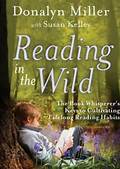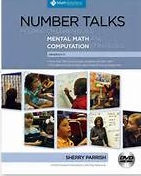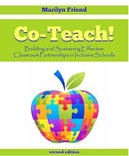
The buses pull up to the curb. Doors slide open, and children with fresh haircuts and brand new sneakers climb off. Weighed down by backpacks stuffed full of school supplies, they find their places in line. Beneath the friendly smiles, shy grins, and steely gazes, I can sense my new students' excitement and anxiety. Feelings I recognize because I am feeling the same way. A new school year and an overwhelming sea of new faces-what lies
in store for the year ahead?
As teachers, we know our new students come to us with apprehension. Will I know anyone in my class? Will I make new friends? Will my teacher be nice? Will I feel comfortable? Our students need to feel a sense of belonging. They need to feel comfortable and safe in order to take the risks necessary for learning. They need to feel valued for their strengths and their uniqueness and feel supported when it comes to their challenges. Taking the time to develop a sense of community within the classroom is the most important thing a teacher can do to start off the school year. The time invested now pays off every single day throughout the year.
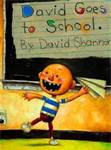
There are many different kinds of "smarts". We need social smarts in order to make friends, connect with others, and feel like we belong. Our words and actions affect those around us. Showing interest in others and thinking about how others feel doesn't always come easy. When we act in "unexpected" ways, the people around us have "uncomfortable" thoughts. In David Goes to School by David Shannon, David spends the day wreaking havoc in his classroom. His exasperated teacher utters the phrase, "No, David!” over and over again. David is seemingly unaware of the effects of his behavior on his unfortunate classmates.
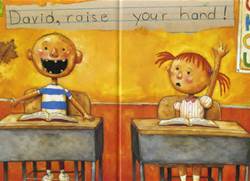
Class Norms
After reading David Goes to School, we agree that
every classroom needs a set of clear expectations. Norms set in place to assure that all members of that community feel
safe, comfortable, and successful. Norms that establish clear
and reasonable expectations.
We ponder this important question:
“How can we make our classroom a place that feels safe and comfortable so that everyone can learn, grow, and have fun?”
We brainstorm rules that are important to us and find that all of our ideas fall under four norms:
~Be Kind
~Be Respectful
~Be Responsible
~Be Safe
~Work Hard
It was important that the class worked together as a community to establish these norms, so that everyone felt valued and invested. We all agreed to follow these expectations to the best of our ability and give reminders when needed.
By agreeing upon a set of norms, we have taken the first step in building our learning community. We are off to a great start!
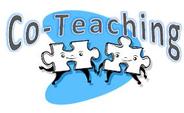
Why Social Smarts*?
This year several of our students have
IEPs that call for clearly defined expectations and explicit instruction in social pragmatics. These students work on social language skills in a one-to-one or small group setting with a speech and language teacher. So often these students learn to apply skills in this structured setting but continue to struggle in authentic social situations. Carrying the concepts and vocabulary of social language over into the classroom benefits all students.
Instructional Delivery**
It is important for our students to see both Jamie and I
delivering direct instruction as well as acting in a supporting role. With a year of co-teaching under our belts, Jamie and I were able to "dance" our way through this lesson, taking turns leading and supporting. I read aloud and lead the discussion about unexpected behaviors and uncomfortable thoughts while Jamie acted as a model, asked clarifying questions (she is masterful at this), and provided cues and prompts when needed. Jamie led the brainstorming session and charted ideas while I took the supportive role.
*To learn more about social thinking visit Michelle Garcia Winner's
website at socialthinking.com
**To learn more about the roles of co-teachers check out Co-Teach: A Handbook for Creating and Sustaining Effective Classroom Partnerships in Inclusive Schools by Marilyn Friend
 RSS Feed
RSS Feed